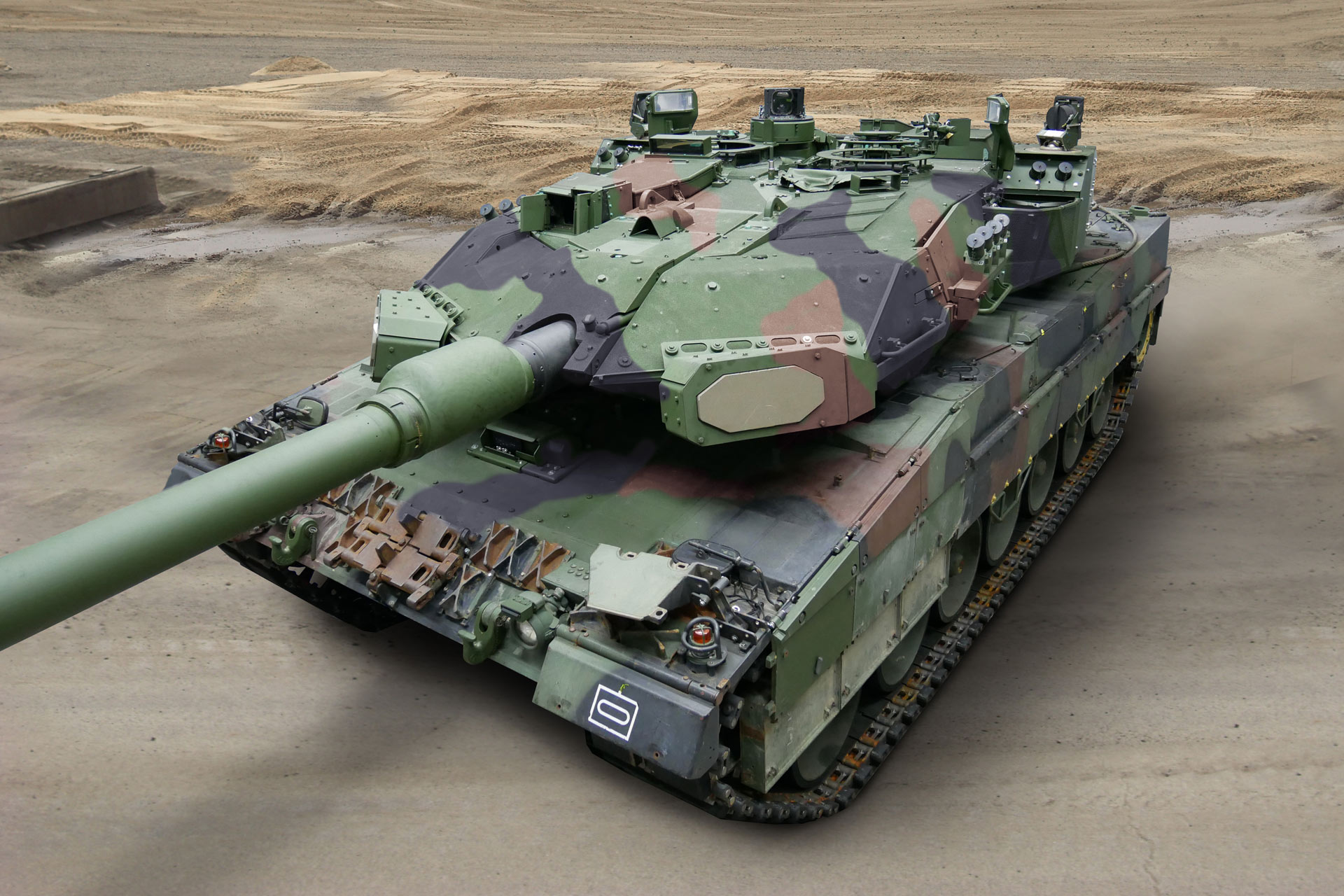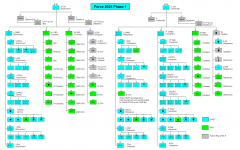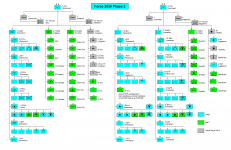My thought is that 3 Div and 1 CABG and it's reserve units would be responsible for all Op Reassurance related rotos and exercises in Europe. 2 Div including 2 CLBG 5 CMBG and their reserve brigade would be responsible for all other operations. The two CCSBs would support any and all missions as required.
I know it's out of style to see anything in the way of a major deployment. I do, however, want the ability to deploy up to a division. My concept involves that reserve formations have a healthy number of Reg F personnel in both leadership and staff roles and that as such, once they are equipped and have achieved an acceptable level of training, reserve formations would be deployable.
Over and above that there are a number of reserve units which would provide augmentees.
I'm looking at this as an aspirational plan done over time. I tend to believe that if all you ever set is low goals then all that you will ever achieve is low objectives (or worse - fail to meet your low objectives). I tend to believe in the Golden Rule of Deterrence -
The gold standard of deterrence and assurance is a defensive posture that confronts the adversary with the prospect of operational failure as the likely consequence of aggression. We currently do not do that. Politically we need to be seen by our allies to be doing more (just as soon as some of them do more) or we are going to loose political credibility and thereby influence. We are perceived as freeloaders by some and irrelevant by others. That's not a good thing and a few billion spent on defence industry in this country would go a long way for both economic development in our heavy manufacturing sector and to build up a stock of military equipment.
Putting that equipment into the hands of a reserve force (which would need major reform) would ensure that we do not have the highly costly full-time PYs to feed year-to-year. In the end, if one develops a viable reserve force, one could conceivably--and probably should--reduce the size of the Reg F and their pay envelope.
The enablers aren't actually being stripped. My model is the US ABCT. Combined arms battalions do not have "weapons companies" like the IBCTs do. Anti armour weapons are part of the IFV (see Bradley) and a pair of 120 mm mortars are organic to each combined arms rifle company. There is a scout platoon within the battalion headquarters and then, of course, the battalion has tanks and the brigade has a full cavalry battalion. It's not the entire CS company going to the cavalry bn but a large part of it.
Exactly. I've been mulling over divisional depot battalions for some time. What I would like to see is that the battalions have several companies that are scattered around the region so that training can happen close to wherever units are (such as in large urban centres as well as the current training centres) Each battalion would be responsible for both recruiting for the army and training everything in the way of DP1 and DP2 for all Reg F and Res F in their part of the country. Essentially a recruit, Res F or Reg F would be recruited and go on a BTL with the appropriate Depot Bn who would manage that individual until they achieve DP1 standard at which time they are turned over to a unit. Training would be year round for Reg F (and Res F who have the time to do it) and full-summer training for Res F students (including distance learning where appropriate) and managing trades people attending community college training and officer candidates civilian attending universities. I'm particulalry concerned about service support trades that seem to have choke points in their training cycles which I would like to see relieved by offloading much of the fundamental trades training to community colleges (where we would pay tuition but not salaries for reservists) and then have specific mil equipment courses during summer breaks (where we do pay salaries) Key to this is that at the depots, the training for a Reg F member and Res F member be identical and using the same equipment. (and that would be regardless of whether we fully equip the reserves or not. In my perfect world, Class A training during the winter would be restricted to ten monthly 2.5 day mandatory sessions during which basic refresher trg (such as annual weapons trg) while the summer would be a two (and better yet three) week mandatory exercise using a full complement of the Reg F equipment if the reserves do not have their own.
Actually 2 CLBG retains 1 and 2 RCR as light battalions plus the RCDs as a light cavalry unit with two light recce, 1 light anti-armour and one light UAV/anti-armour squadron plus an engineer and service capability. That is the Army's rapid reaction force which, in a pinch can be reinforced by LAV equipped elements from 5 CMBG.
Thanks. I appreciate them.









